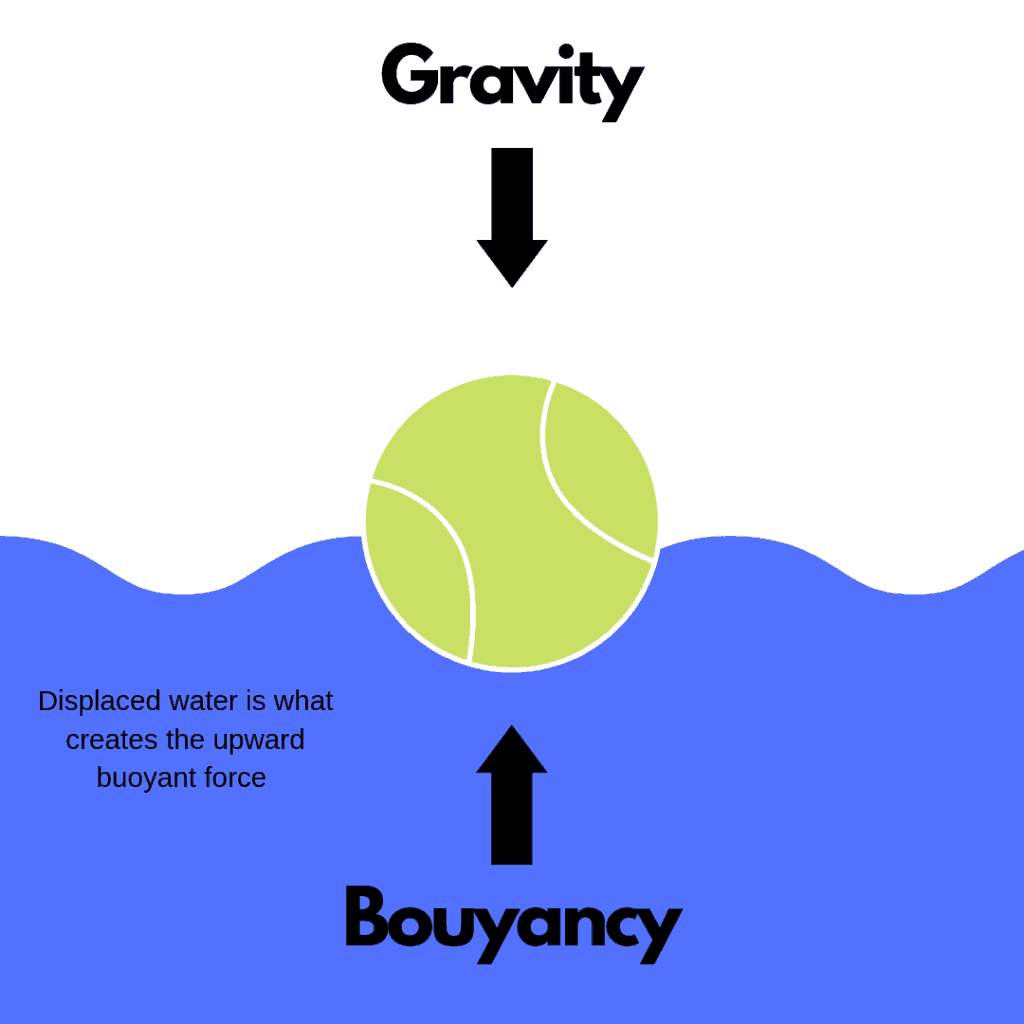
Hot air balloons are majestic, colorful, blobs that float far above the ground much to our amazement and amusement. But how high exactly do these flying sacks go?
Hot air balloons normally fly between 1,000 and 3,000 feet in the air. When balloons fly over populated areas, they legally have to be flying above 1,000 feet in the air. Because of the harsh conditions at higher altitudes, hot air balloons normally don’t surpass 3,000 feet. The highest a balloon has ever flown is 68,986 feet.
Hot air balloons are definitely meant for leisure but can be transformed into amazing, record-breaking devices. Below, we’ll discuss how balloons fly as high as they do, why there are limits, and how those limits have been surpassed!
Average Height
On average, hot air balloons fly between 1,000 and 3,000 feet in the air. This is true inside and outside of the United States. Some of the laws we’ll reference later will be specific to the U.S., but this average holds true pretty much everywhere.
A lot of the success and safety in hot air ballooning is dependent on weather, especially the wind. Being between 1,000 and 3,000 feet in the air is a sweet spot for the perfect wind.
It’s also high enough that you can get an awesome view!
Most balloons and their pilots prefer to fly at lower altitudes. The conditions tend to be more favorable, and it is also a bit warmer normally! It usually gets 3-4 degrees colder for every 1,000 feet you travel up!
Of course, many passengers like to see how high they can get. This is for both the thrill and the view! High altitude pictures can be really cool! Pilots know how high is too high while still keeping their passengers satisfied.

A Reasonable Fear of Heights
For the uninitiated, 1,000 to 3,000 feet in the air is really high! Especially when you’re being held up by hot air in a nylon sack with a hole at the top and the bottom!
And don’t forget about that woven wicker basket you’re supposed to just trust! Seriously, who in their right mind thinks it’s safe to fly over 1,000 feet in the air in a hot air balloon?
Well, it may put your mind at ease to know there have been thousands of safe flights at these altitudes, and very few accidents! In fact, most hot air balloon accidents happen under 1,000 feet.
Once you’ve gotten to your cruising altitude, you’re really safe! It’s the taking off and landing where the few accidents that do occur in ballooning tend to happen.
You’re high enough that you won’t run into anything and low enough that you’ll have favorable wind conditions. Plus, in a hot air balloon, you actually have the right of way in the sky, so don’t worry about airplanes!
All in all, having an average height of between 1,000 and 3,000 feet should put your mind to ease. It’s the perfect height for safety and having a good time!
On top of all of that, you’re actually more likely the get in an accident in a car or motorcycle on the ground than you are in a hot air balloon thousands of feet in the air!
So 1,000 to 3,000 feet doesn’t sound all that bad, now does it? The average altitude for a hot air balloon ride is just perfect!
How do They Get so High?
Considering how high hot air balloons fly on average, one naturally asks the question: how do they get there in the first place? Well, you have come to the right place!
The answer is both complex and very simple. To me, it’s also fascinating!
Buoyancy
The short answer is that hot air balloons fly because hot air rises. It really is that simple, but what does that mean in scientific terms? To answer that, you have to understand buoyancy.
The law of buoyancy, also called Archimedes’ principle, states that an object completely or partially submerged in a fluid (a liquid or gas) is acted upon by an upward force equal to the amount of fluid displaced by the object.
That upward force is called the buoyant force! I’ll illustrate with an example we’ll all be familiar with (and I’ll provide a helpful graphic too!).

As you can see above, we have the example of a tennis ball in water. The tennis ball is the object and the water is the fluid.
The tennis ball displaces water until the upward force is equal to the downward force exerted by gravity. At that point, the tennis ball floats!
But what would happen if we placed a lead ball of the exact same size into the water? Well, as you already know, it would sink! But why is this?
Completely submerged, the tennis ball and lead ball displaces the same amount of water, so the buoyant force acting on them is the same. The difference is the weight of the two balls.
The led ball, which weighs much more than the tennis ball, has a greater downward force that causes it to sink where the tennis ball would float! That’s Archimedes’ principle!
Balloons and Buoyancy
So how does that apply to hot air balloons and how high they can fly?
The first thing you need to remember is that a fluid is a liquid or a gas. All that oxygen you’re surrounded by? That’s a gas, which qualifies as a fluid.
A hot air balloon’s envelope is filled with, well, hot air. That hot air is lighter (less dense) than the air outside of the envelope. That means that the envelope begins to rise because it’s buoyant force is greater than the downward force of gravity!
The downward force working on a hot air balloon never changes, but as the air inside the envelope heats up, it’s buoyant force increases. The more buoyant force, the faster and higher it will rise!
And that’s how hot air balloons rise as high as they do! They are filled with hot air that causes them to begin to fly, and then the pilot will continue to shoot flames into the envelope to keep the air inside heated.
The higher you want your balloon to go, the warmer you need the air inside the envelope to be. If you want to land, you need to let hot air escape.
There’s more physics to it than that, but we’ve covered the relevant stuff. Now you know how hot air balloons fly as high as they do!
What Are the Limits?

We’ve already alluded to some of the limits for a hot air balloon flight, but what are they exactly? Well, there are a few different ways to answer that question.
One of the ways to answer that question is to address the legal limits. You could also talk about the limits enforced by the laws of nature and the laws of physics.
You could also talk about the limits of how high is too high or the limits of how low is too low. Basically, there’s a bunch of ways you could answer this question!
We’ll look at all of these limits in one way or another. We’ll begin by looking at limits that we have enforced upon ourselves.
Man-Made Limits
For this section, we’ll only be talking about laws and limits set in the United States. The diversity of laws around the world relating to hot air ballooning makes it much too difficult to address every country in this blog.
In fact, because there are so many laws in the United States alone, we’ll really just be focusing in on one limit that will help us answer two questions.
In the United States, hot air balloons must fly at least 1,000 feet over the highest obstacle within 2,000 horizontal feet when flying over populated areas.
This is similar to a law in Australia which states that a hot air balloon must travel 1,000 feet above ground level when flying over a populated area. The U.S. law is obviously a little more precautious.
These laws are examples of man-made limits and also limits on how low a hot air balloon can go.
Natural Limits
Mother nature herself has set some limits. These limits tend to be a little more binding than man-made limits and also usually carry more severe consequences for ignoring them.
For example, why don’t most hot air balloons travel over 3,000 feet in the air? Well, for some countries, that’s because that is the legal limit. But for many balloonists, that is because the air gets much more unpredictable at that height.
Not only are winds more unpredictable, but they’re also much stronger. This is mostly because of convection currents being created by changes in air temperature.
Also, as I’ve already mentioned, the temperature gets colder the higher you go. On top of this, once you cross 8,000 feet, the air starts to become thinner. Even elevating slowly could result in elevation sickness.
Because of these natural limits, most hot air balloons prefer to stay closer to the ground when flying. For those who have wanted to fly higher, special equipment has been necessary for safety and success.
The Highest Ever

While most hot air balloons like to stay between 1,000 and 3,000 feet, there have been some who have dared to go higher. Much higher.
Of course, these balloonists don’t just go up in any old hot air balloon. They work with scientists and engineers to have the best possible equipment. They study and research the best possible ways of reaching higher altitudes.
These adventurers are definitely the exception to the rule.
One balloonist dared to soar higher than the rest. Vijaypat Singhania, an Indian businessman and aviator took his hot air balloon 68,986 feet up in the air.
That is over 13 miles straight up! This record is even more impressive when you consider that Singhania was 67 years old when he accomplished this feat back in 2005! What an incredible record!
So how exactly did Singhania pull off this mind boggling record?
The Record
Singhania, who has been adventurous his whole life, set out to fly over 70,000 feet in the air in a hot air balloon. Already successful in business and aviation, no one doubted that he could accomplish his goal.
While Singhania didn’t quite reach his goal, he did come close. In addition, he broke the previous record held by Per Lindstrand of just under 65,000 feet in elevation.
The balloon Singhania used was extremely expensive, but how much it cost exactly we do not know. What we do know is that it was outfitted for extreme altitudes and stood over 160 feet tall and weighed 44 tons when fully inflated.
Singhania stayed in a pressurized cabin for just under five hours to accomplish the record.
The flight began in Bombay and landed just 150 miles to the south in a small village. Singhania was welcomed with many reporters and local villagers excited by his achievement.
The exact height that Singhania was verified by sealed equipment on board, and was later verified to be 68,986 feet despite initial reports that it was higher.
Singhania, who holds other aviation records and awards, was recognized around the world for this singular achievement of bravery and fortitude.
What’s on the Horizon?
At the present time, it appears that Singhania’s record is far from safe!
Fedor Konyukhov, a Russian explorer who holds numerous world records in various fields, is currently working with Cameron Balloons to set a new record for highest flight in a hot air balloon!
Who is Fedor Konyukhov
Konyukhov doesn’t just want to break the previous record, he wants to smash it! Konyukhov’s aim is to fly 114,800 feet in the air, a goal he has had since he was a little boy.
This would be another accomplishment in a long line of accomplishments for the Russian explorer. Konyukhov is considered by many to be the great explorer of our day.
He currently holds the record for the fastest time around the world in a hot air balloon. He was also the second pilot to circumnavigate the world in a hot air balloon.
Konyukhov has visited the North and South Pole, climbed the highest peak on each of the seven continents, was the first person to circumnavigate Antarctica in a sailboat, and has sailed around the world four times.
He is also a priest in the Ukrainian Orthodox Catholic church, noted artist, and served for three years in the Soviet Navy.
I guess what I’m trying to say here is that if anyone can jump in a hot air balloon and fly over 100,000 feet in the air, Fedor Konyukhov can.
What Lies Ahead?
As of October 2018, Cameroon Balloons announced that they are over halfway done building their balloon for Konyukhov. Once completed, it will be the largest hot air balloon ever.
Konyukhov will have to fly into the exosphere if he wishes to achieve his goal, so everything must be precise. He is currently 67 years old, the same age as Vijaypat Singhania when he set the current record.
Konyukhov is certainly in good shape as he seems to have almost accelerated the pace at which he works.
So, keep your eyes open for what lies ahead! The history of hot air ballooning teaches us that humankind will always strive to outdo itself.
Records truly are made to be broken, and this is one seems ripe for the breaking.
